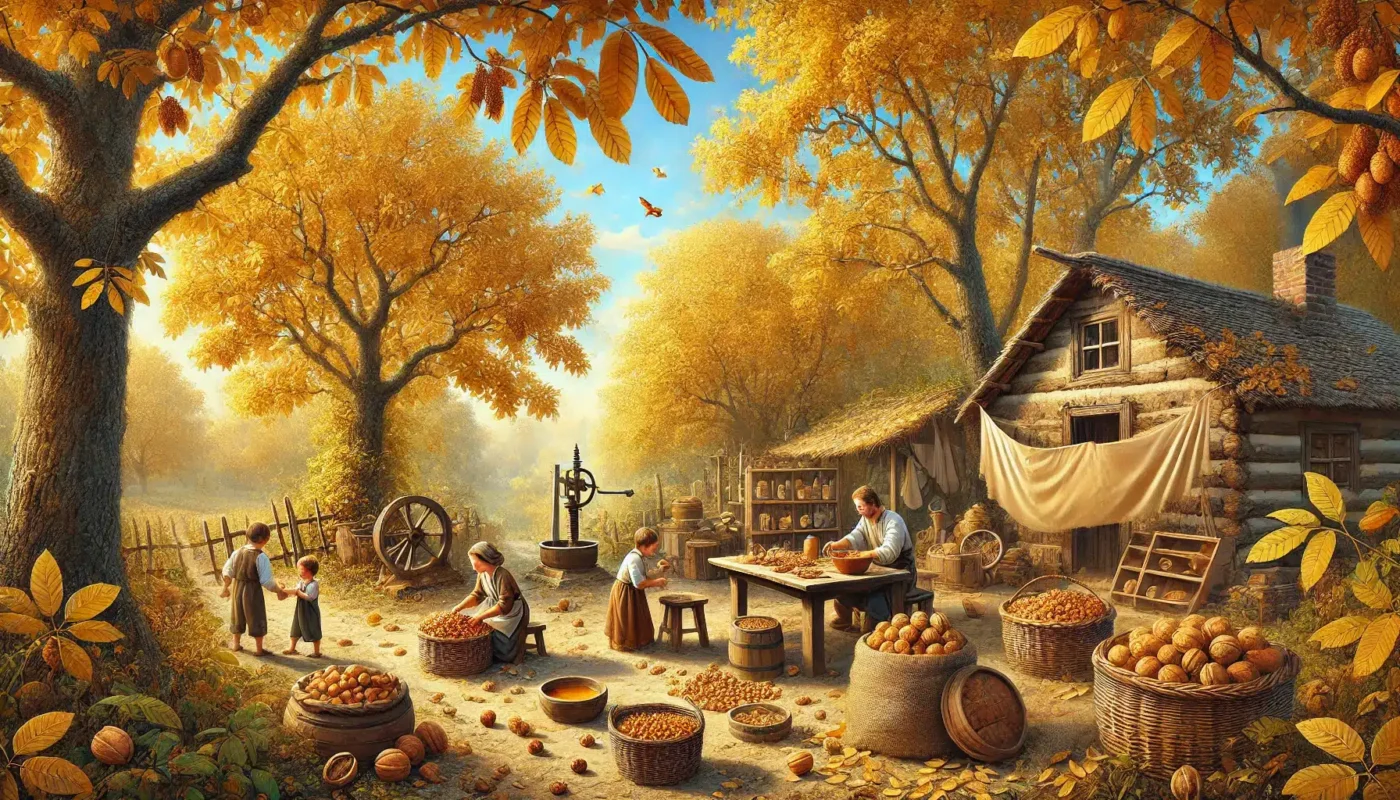Blog
When walnuts fall – from the network
A guide to autumn collections with headquarters
When the air becomes crunchy and the days become shorter, the sound of nuts falling on tin roofs, forest floors and farms in the yard fill the village.
For people living outside the network, the walnut season is more than another one of the autumn – it’s time to collect food, prepare for the winter and use one of the most versatile nature gifts. From the kitchen pantry to workshops, nuts offer endless possibilities if you know how to use them.
Collecting collections
The first step is collecting. Walnut falls with a green or brown scale, which separates when it matures. If you wait too long, squirrels and birds will take their participation. Families outside the network know that a daily walk around the yard or forest during the nut season can quickly fill buckets.
Gloves are a must, especially in the case of black walnuts, because their scales protect the skin and deep brown clothes. Spread the caps on the tarpaulin or screen to cure a few weeks before storage.
Turn nuts with food
Nuts take patience for processing, but the prize is worth it. First you need to remove scales – some stomping them inside the sack, others throw them under the board. Rinse the nuts well on the hull, then put them to dry in a shed for 2-4 weeks.
The breakdown of them opens muscles – black walnuts may need a hammer or vivid, while English walnuts are easier with a heavy nut. In the case of long -term storage, walnuts can be stored in shell in cavity sacks or crust and frozen. They are rich in healthy fats and protein, ideal for winter baking, porridge or peanut butter.
Pressing nut oil
In addition to eating, walnuts can be pressed into light, aromatic oil. Hand -compact press is all you need outside of the network. Nut oil is not just tasty-it is thick calories, it stores well in jars, and you can even burn it in the lamps with a right wick.
In addition to eating, walnuts can be pressed into light, aromatic oil. Hand -compact press is all you need outside of the network. Nut oil is not just tasty-it is thick calories, it stores well in jars, and you can even burn it in the lamps with a right wick.
With the help of a nut dye
Dark spots, which nut scales leave on your hands, also act as a natural dye. For centuries, people cooked slate for coloring wool, cotton and linen in rich brown shades. The concentrated dye also produces constant ink, once valued by the scribes.
Even wooden designs, such as Coops, tool handles or furniture, can be colored with scales for a rustic finish. Unlike dyes bought in the store, the color of the nuts is resistant to fading and it lasts years.
Don’t waste the shell
The shells are also useful. Dried, they make a perfect lighting or fuel for rocket furnaces. They crushed, create a long -lasting litter around fruit trees and perennials. Local nut shells even act as a delicate cleaning clip, once used in soaps and scrubbing powders.
Careful animal feeding
Peanuting and nut leaves contain chemicals called juglone, so they should be carefully used. In small amounts, powdered hulls made of walnuts were used as a natural deworm for goats and sheep. English walnuts (not black) can be cracked and served to pigs or poultry for additional fat before winter. Chickens like to peck on the remains of the respiratory knob in broken shells.
Nut wood for craftsmanship
Fallen branches or cut limbs are also important. Nut wood is thick, strong and ideal for carving spoons, bowls and even furniture repairs. Some of the household turn it into carbon or bio farm, which increases garden soil.
In the right hand, Woodon Wood can become kitchen utensils of quality or simple, durable tools.
Soil enrichment
Łurek and nut shells can also return to the ground. Fresh slate is too harsh for most plants, but after composting at a hot pile, it breaks down.
The result is rich ecological material for mulching or mixing with garden beds. The shells mixed with compost form a long -term soil correction. Even fresh slate can help pushes pests after spreading around wood or Coop circuits.
Old remedies and medicine
Nuts have a long history in folk medicine. Extracts from black nut hulls were used for fungal infections, parasites and skin problems.
Nut leaf tea was used for wounds, and nuts themselves are provided by omega-3, vitamin E and antioxidant-nourishing, which support health in cold months.
Community season
In addition to food and crafts, the walnut season connects people. Families often gather to hull and crack nuts, telling stories during work.
Nuts of surplus are divided or replaced, and children learn patience while collecting and opening hard shells. On the farm, the nut season is not only harvest – it is a relationship with earth and yourself.
The gift of a nutty tree
When nuts begin to fall, the houses see more than nuts on the ground. They see oil for lamps, food for a pantry, fabric dye, garden mulch, medicine for winter and fire for a hearth.
Each part of the nut tree has a goal. It is a reminder that nature gets abundantly to those who are happy to gather and use it.

